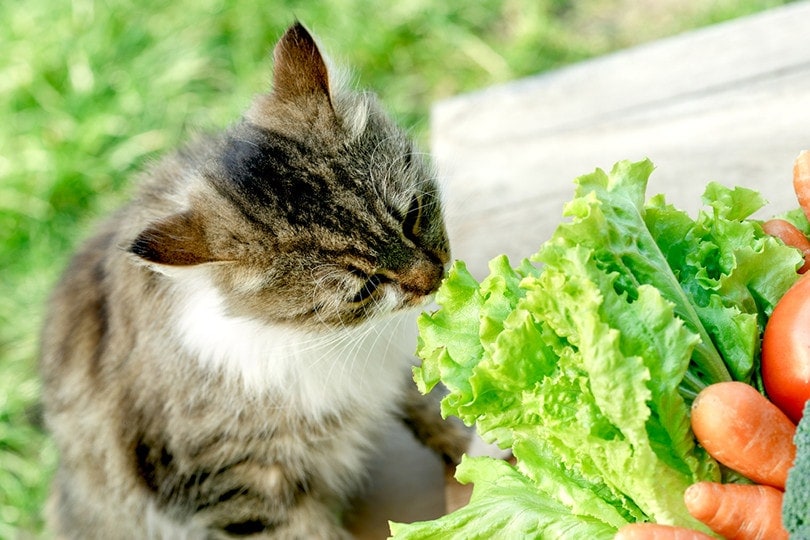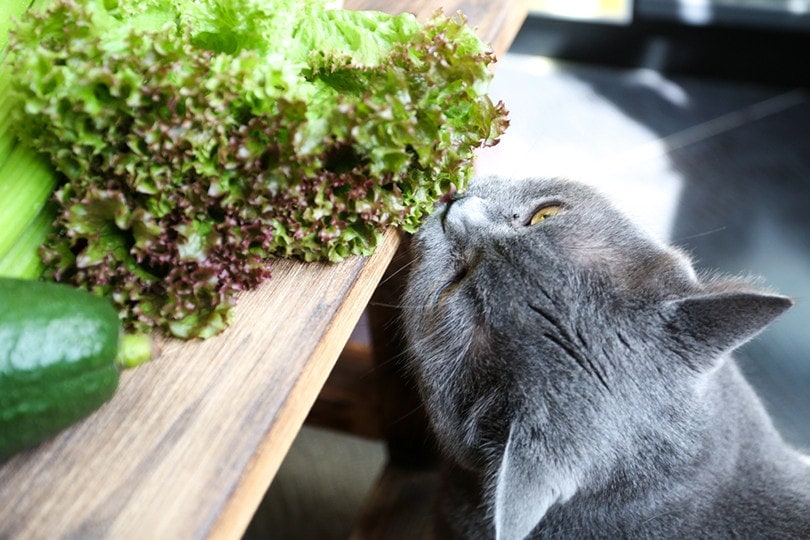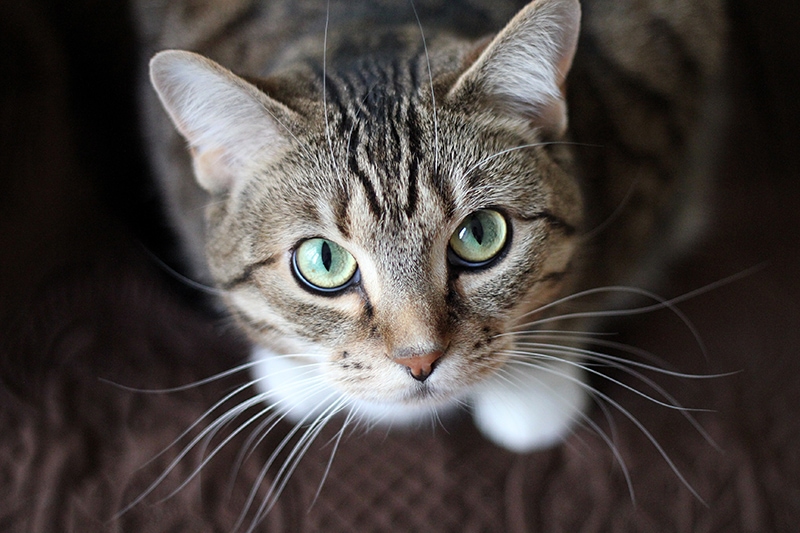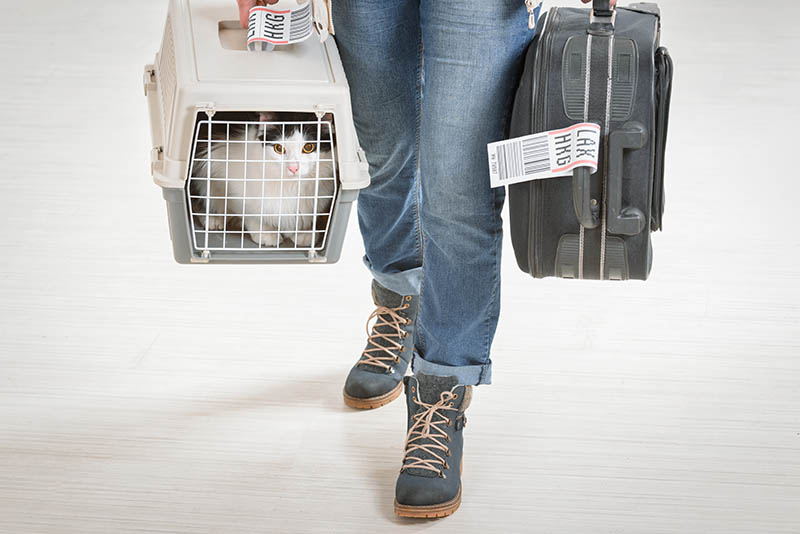Can Cats Eat Lettuce? Nutrition Facts & FAQ

Updated on

The answer to the question depends on whether you mean “is lettuce poisonous” or “is lettuce healthy?” Lettuce is not poisonous to cats and won’t harm them if they nibble some off the edge of your sandwich. Lettuce can also provide health benefits because it’s highly dense in fiber, something cats don’t get as often from their primary food sources.
However, cats are not made to break down the nutrients in lettuce. They don’t get the same nutritional benefits from eating lettuce as omnivorous or herbivorous animals. Lettuce may be a nice, crunchy treat, but it shouldn’t be your cat’s primary food source.
Cat Nutrition Basics
As obligate carnivores—sometimes called hypercarnivores—cats aren’t biologically built to break down plant matter in their stomachs. Cats’ bodies are only biologically able to break down animal proteins effectively. In plant materials, they do not get most of the nutrients available to omnivorous and herbivorous animals.
Because cats can’t digest the nutrients in plant material, overconsumption can lead to severe malnutrition. Plant material may not be toxic, but it isn’t nutritious for cats to consume the way it is for dogs and humans.
However, just because they don’t get the same nutrient profile from plants as humans don’t mean that plant matter is entirely useless to them. The plant matter is a dense source of fiber, which cats don’t get a lot of in their natural diets.
Are Leafy Greens Nutritious?
Lettuce and other leafy greens can be a great source of fiber, water, and folic acid, all things cats need in their diet but don’t get as often. We find that some cats love lettuce and will go to town if offered some, while others couldn’t care less about it. Still, it’s a dense nutrient when provided in moderation.
Pet parents will want to steer clear of some greens, though. Iceberg lettuce has very high water content and can leave cats with diarrhea. Dark lettuce like romaine lettuce and organic lettuces may be better for cats nutrient-wise.
Again, the key is moderation.

Risks of Feeding Your Cat Leafy Greens
Feeding your cats can have detrimental effects on your cat’s health. While leafy greens can have essential vitamins and minerals that cats would not otherwise get, they are high in water and very low in protein, integral to a cat’s diet.
The high water content can upset the gastrointestinal microbiome of a cat’s stomach. The upset to the gut microbiome can have devastating effects on a cat’s overall health outcomes. Additionally, leafy greens can be very filling because of the high water content. This filling effect can lead to cats not eating their primary food source and poor overall nutrition.
There is also significant fear of harmful synthetic chemicals finding their way into your cat’s produce. Stay vigilant about what greens you’re feeding your cat, and make sure you wash them thoroughly before feeding. One of the more significant fears when providing our cats with is the real risk of synthetic pesticides and other potentially harmful substances finding their way into our cats’ foods.
How to Feed Your Cat Leafy Greens Safely
Leafy greens should not be your cat’s primary source of food. Cats need at least 70% of their food to be made up of animal proteins to maintain optimum health outcomes. When fed as a treat, leafy greens should make up no more than 10% of your cat’s overall dietary intake. Ideally, they should make up 5% or less of your cat’s overall nutritional intake.
One way to feed your cat leafy green safely is to use the leafy greens to improve the palatability of your cat’s primary source of food. This method works well if your cat prefers leafy greens over its primary food source. When doing this, you will want to mix your cat food with shredded leafy greens to entice your cat with their primary food source by stimulating their appetite.
For many picky cats, this is a perfect way to get them eating the food that they need to be eating. Though it may not be necessary if your cat is not swayed by leafy greens, mixing in some leafy greens with your cat’s regular food can help provide variety to their everyday meals.
Another way that you can get your cat eating some leafy greens is to feed them leafy greens in the place of store-bought treats. This is particularly good for cats who like to eat leafy greens independently. However, it won’t help you if your cat doesn’t enjoy eating greens.
Not all cats enjoy eating leafy greens. Luckily, leafy greens aren’t in their necessary nutritional profile. So don’t worry if you can’t get your cat to eat leafy greens. They won’t die without them.

What Other Vegetables Are Safe to Feed to Cats?
Leafy greens aren’t the only vegetables the cats can eat. There are many plants that cats can eat and derive nutrients from. Broccoli and collard greens are dense sources of fiber that can help cats with digestion; adding a little bit of fiber roughage to your cat’s diet can help your cat pass difficult digestive obstructions like hairballs.
There are some other vegetables that pet parents want to avoid. Onions can induce anemia. Garlic, leeks, shallots, scallions, and chives can cause gastrointestinal upset and should be avoided at all costs. These vegetables can cause damage to red blood cells and wreak havoc on the cat’s body’s systems.
Now that you know what you can safely feed your cat, it’s just as important to find a bowl that supports their health and well-being. With whisker-friendly bowls and a wide tray to catch any spills, our Hepper NomNom Cat Bowl is our favorite option.
Final Thoughts
Cats often beg for human food. While it can be hard to say no to their cute little faces, we have to make decisions for their health outcomes that are sometimes unpleasant for them. Leafy greens may not be toxic for cats, but that doesn’t mean that we should be giving the leafy greens in favor of their regular food. If your cat likes leafy greens, rest assured that the occasional nibble of lettuce will not harm them. The most important thing is to follow your cat’s lead. Consult your veterinarian for guidance on your cat’s nutritional needs if you are worried.
Featured Image Credit: Pexels. Pixabay












